1. Understanding Blockchain for Business
In today’s fast-paced business world, it’s crucial for companies to stay updated with the latest technologies. One such technology that’s making waves globally is blockchain. But what exactly is blockchain, and how can it benefit businesses in India?
Think of blockchain as a super-secure digital ledger that records transactions. Unlike traditional ledgers managed by a single authority, blockchain spreads its data across a network of computers. This decentralisation makes it extremely tough for anyone to tamper with the records.
Now, you might wonder, why should businesses care about blockchain? Well, because it offers solutions to many common problems we face. Whether it’s ensuring transparency in transactions, reducing fraud, or cutting down on paperwork, blockchain has the potential to revolutionise how we do business in India.
From finance to healthcare, supply chain to real estate, blockchain has applications in almost every sector. Imagine being able to track the journey of a product from the manufacturer to the store shelf with complete accuracy. That’s the power of blockchain!
But adopting blockchain isn’t as simple as flicking a switch. It requires careful planning and execution. That’s why this guide is here – to help,businesses understand the steps involved in integrating blockchain into their strategies.
2. Blockchain for Business: A Practical Guide
In today’s fast-paced business world, it’s essential to keep up with the latest technologies to stay ahead. One such technology that holds immense promise is blockchain. But before we jump into implementing it, let’s take a simple step-by-step approach to understand how it can benefit our businesses.
Step 1: Find Where Blockchain Fits
Let’s start by figuring out where blockchain can make a real difference in our day-to-day operations. Think about areas in your business where things could be smoother or safer. For example, in supply chain management, where goods move from one place to another, blockchain can help track each step securely. In financial transactions, it can ensure that every payment is recorded accurately without any chance of fraud.
Identity verification is another area where blockchain shines. Whether it’s for employees, customers, or partners, blockchain can create a secure system for verifying identities, which is crucial in our digital age.
And then there are smart contracts. These are like digital agreements that execute themselves when certain conditions are met. They can automate many tasks, saving time and reducing the risk of errors.This first step is all about understanding how blockchain can solve real problems and make our lives easier in the business landscape.
Step 2: Setting Clear Objectives and Goals
When you’re diving into the world of blockchain for your business, it’s crucial to start with clear objectives and goals. Think of it as setting a roadmap for where you want to go and what you want to achieve.
First off, ask yourself: What do you want blockchain to do for your business? Are you looking to save money, keep your data safer, build trust with your customers, or find new ways to make money? Each goal will shape how you approach using blockchain.
Let’s talk about saving money. With blockchain, you can cut out the middlemen and streamline your processes, which means fewer fees and lower costs. Plus, once you set up blockchain systems, they can automate tasks, saving you time and effort in the long run.
Now, onto keeping your data safe. Traditional databases can be vulnerable to hacks and tampering, which can be a big headache. But with blockchain, your data is stored securely and can’t be changed without everyone knowing. That builds trust with your customers, showing them that their information is in safe hands.
Let’s talk about finding new ways to make money. Blockchain opens up a whole world of possibilities, from creating new digital assets to setting up smart contracts that execute automatically. So, take some time to think about what you want to achieve, and get ready to take your business to the next level with blockchain!
Step 3: Choosing the Right Blockchain Platform
Picking the right blockchain platform is like selecting the perfect tool for your job. It’s crucial to find one that fits your business like a glove. So, how do you go about it?
Start by considering scalability, which is essentially how well the platform can handle increasing loads of work. Take Ethereum, for example. It’s gearing up for Ethereum 2.0, promising better scalability. Then there’s Hyperledger Fabric, offering customizable scalability options to suit different needs.
Next up, the consensus mechanism. This fancy term simply refers to how agreement is reached on the network. Ethereum uses proof-of-work, ensuring robust security, but it’s a bit slow. On the other hand, Hyperledger Fabric opts for a permissioned approach, which works well for businesses.
Security features are a must, especially in industries like banking and healthcare. Corda is known for its top-notch security measures, ensuring your data stays safe and sound.
Lastly, think about development flexibility. Stellar shines here with its user-friendly interface, making it easy for developers to get things done quickly and efficiently.
By weighing factors like scalability, consensus mechanism, security features, and development flexibility, you can find the perfect blockchain platform for your business. It’s like finding the right spice for your curry – once you’ve got it, everything just falls into place!
Step 4: Developing a Proof of Concept (PoC)
Initiate your journey into blockchain for business by crafting a Proof of Concept (PoC). This step is akin to laying the foundation of a grand edifice. Begin with a clear focus on a particular use case or process relevant to your business. Through this PoC, delve into the realms of blockchain’s potential, assessing its feasibility and the myriad benefits it could bring. It’s akin to testing the waters before diving in. By doing so, you not only gain practical insights but also identify and mitigate potential risks, ensuring a smoother transition towards full-scale implementation. This trial run is crucial in understanding how blockchain applications can truly transform your business landscape.
Step 5: Building the Infrastructure and Network
Now that your Proof of Concept (PoC) has greenlit blockchain integration, it’s time to roll up your sleeves and construct the vital infrastructure and network. Begin by establishing nodes, those crucial points that keep your blockchain network running smoothly. Next, delve into setting up consensus mechanisms, the backbone of agreement among network participants. If smart contracts are part of your strategy, deploy them judiciously. Consider partnering with seasoned blockchain developers or tapping into existing frameworks for a more seamless journey ahead. With the groundwork laid, you’re on track to harnessing the full potential of blockchain for your business in India.
Step 6: Ensuring Regulatory Compliance
To seamlessly integrate blockchain into your business strategy, it’s crucial to prioritise regulatory compliance. Given India’s diverse regulatory landscape, understanding and adhering to applicable laws is paramount. Consultation with legal professionals well-versed in blockchain regulations is indispensable. This step involves ensuring data privacy in line with laws like the Personal Data Protection Bill and addressing concerns specific to your industry. By embracing regulatory compliance, you not only mitigate risks but also foster trust among stakeholders, laying a solid foundation for blockchain implementation.
Step 7: Training and Education
Incorporating blockchain into your business strategy requires a robust understanding among your team members. Begin by providing thorough training and educational resources that demystify blockchain technology. This empowers your workforce, ensuring they grasp its relevance and potential impact on your business. Cultivate a culture that values innovation and continual learning, encouraging employees to explore blockchain’s applications in their specific roles. Emphasise hands-on experimentation and facilitate knowledge-sharing platforms to foster a collaborative environment. By investing in the education of your team, you equip them with the necessary skills to effectively integrate blockchain into your business operations.
Step 8: Continuous Monitoring and Optimization
Now that your blockchain solution is up and running, it’s crucial to keep a vigilant eye on its performance. Think of it like tending to a garden – regular checks ensure healthy growth. Continuously monitor how your blockchain system is functioning. Are transactions smooth? Are there any bottlenecks? Listen keenly to feedback from those using it – they’re your best critics! Dive deep into the metrics – transaction speeds, network congestion, etc. This data is your compass, guiding you towards areas needing improvement. And remember, in the tech world, change is constant. Stay updated on the latest blockchain advancements, tweaking your strategy as needed. It’s a journey of constant learning and refinement!
Conclusion
The potential of blockchain technology to transform businesses is immense, offering solutions to various challenges and paving the way for innovation across sectors. By embracing blockchain, businesses can enhance transparency, security, and efficiency in their operations, ultimately driving growth and competitiveness in the dynamic market.
Through this guide, we’ve outlined a practical roadmap for companies to integrate blockchain into their strategies effectively. From identifying suitable use cases to setting clear objectives, choosing the right platform, and developing a proof of concept, each step is crucial in ensuring a seamless transition towards blockchain adoption.
Moreover, prioritising regulatory compliance, providing comprehensive training and education to employees, and continuous monitoring and optimization are essential elements for successful blockchain implementation.
As businesses navigate the complexities of the modern landscape, embracing blockchain technology offers an opportunity to stay ahead of the curve, foster trust among stakeholders, and unlock new avenues for growth and innovation. By embracing this transformative technology,companies can position themselves as leaders in the global marketplace, driving sustainable success in the digital age.
FAQs
1. What is blockchain technology?
Blockchain is a secure digital ledger that records transactions across a network of computers. Its decentralized nature makes it difficult for anyone to tamper with the records, ensuring transparency and security.
2. Why should businesses consider using blockchain?
Blockchain offers solutions to many common business problems, including enhancing transaction transparency, reducing fraud, cutting down on paperwork, and improving data security. It has applications in various sectors such as finance, healthcare, supply chain management, and real estate.
3. How do I determine if blockchain is suitable for my business?
Start by identifying areas in your business that could benefit from improved security, transparency, or efficiency. Common applications include supply chain tracking, financial transactions, identity verification, and smart contracts.
4. What are the first steps to integrating blockchain into my business?
Begin by understanding where blockchain can fit into your operations. Set clear objectives and goals for what you want to achieve with blockchain, such as cost savings, enhanced security, or new revenue streams.
5. How do I choose the right blockchain platform?
Consider factors like scalability, consensus mechanisms, security features, and development flexibility. Popular options include Ethereum, Hyperledger Fabric, and Corda, each offering different strengths.






